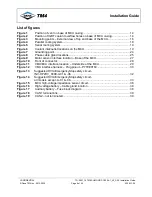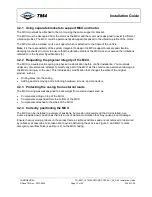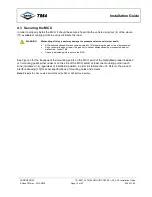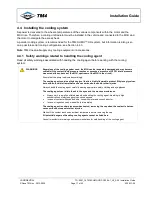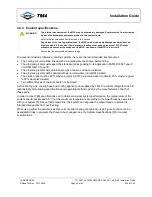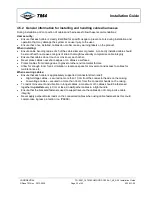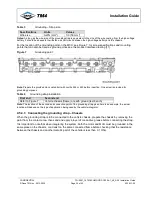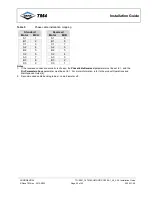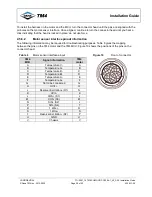
Installation Guide
CONFIDENTIAL
TG-0057_19 TM4 SUMO HD CO300-A1_A2_A2.5 Installation Guide
© Dana TM4 inc., 2013-2020
Page 13 of 42
2020-11-20
4.2.1 Using separate brackets to support MCU and motor
The MCU must
not
be attached to the motor using the same support or bracket.
The MCU must be decoupled from the motor as the MCU and the motor were designed to resist to different
vibration profiles. The MCU could be permanently damaged if exposed to the vibration profile of the motor.
The MCU must be installed on its own support which is attached to the frame of the vehicle.
Note
: It is the responsibility of the system integrator to design the MCU support brackets and vibration
damping mechanism in order to ensure that the vibration profile of the MCU does not exceed the limitations
referred to in the System Specifications [5].
4.2.2 Respecting the physical integrity of the MCU
The MCU is a sealed unit requiring no physical customization before or after installation. You must
not
,
under any circumstances, attempt to modify any part of the MCU as this could cause permanent damage to
the MCU and injury to the user. This includes any modification that changes the state of the original
product, such as:
•
Drilling holes into the casing.
•
Adding and/or removing parts including hardware, screws, and connectors.
4.2.3 Protecting the casing from external loads
The MCU casing was
not
designed to bear weight from external loads such as:
•
Components sitting on top of the MCU.
•
Components suspended from the bottom of the MCU.
•
Components attached to the sides of the MCU.
4.2.4 Correctly positioning the MCU
The MCU can be installed in a variety of positions, but we do not recommend that it is installed in an
inverse (upside down) position as there is a risk of water accumulation that may cause product damage.
Ensure that any warning labels on the product remain visible at all times and are not removed or obscured
by cables or accessories. Also take care to avoid obstructing the vent (see Figure 1) and IGBT coolant
emergency overflow holes (see Figure 2) on the MCU casing.






